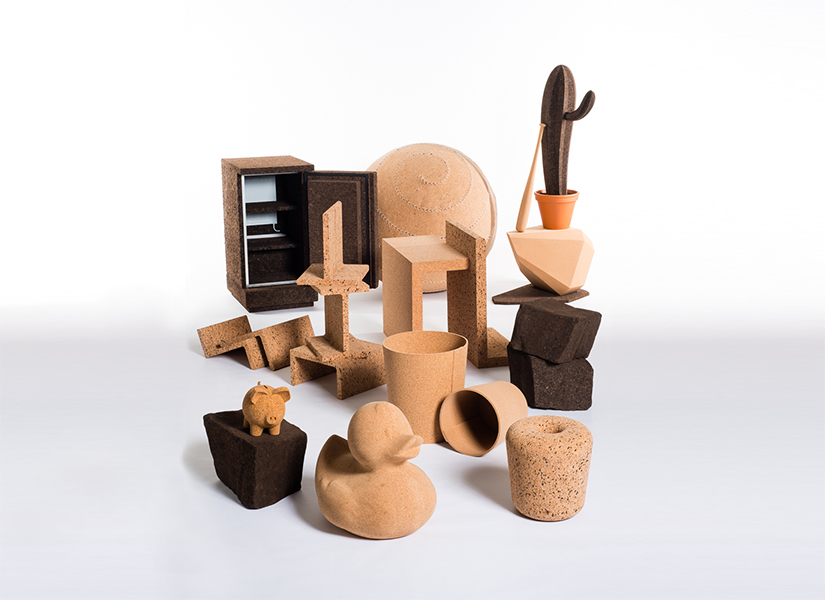Kork: A Introduction
Old World - New World

Foto: Philip Radowitz
Text: Maier-Aichen
Auf einer Exkursion in die nördliche Region von Portugal und mit großzügiger Unterstützung der Firma Amorim, dem führenden Korkunternehmen Europas, konnte eine Auswahl von Studierenden der HfG Karlsruhe sich dem Naturmaterial Kork nähern, die spezifischen Eigenschaften erkunden und Gestaltungsideen entwickeln, die diesem Rohstoff einen erweiterten Einsatz und neue Perspektiven eröffnen, somit Produktideen mit einem hohen Wiedererkennungswert schaffen.
Im Rahmen dieses Werkbesuches bei Amorim wurden erste Standardinformationen vermittelt und verschiedene Produktionsmethoden erläutert. Die spezifische Charakteristik des Materials und die dort entwickelten Kompositen – verpresste Granulatvarianten in unterschiedlichen Größen – machten neugierig, forderten das gestalterische Potenzial heraus, förderten die Inspiration.
Die vorliegenden Prototypen, Transformationen individueller Reflexion, stellen die Authentizität der jeweiligen Beiträge auf den Prüfstand.
Funktionale und formale Lösungen stellen dabei nur eine Option dar. Das Material und die subjektive Wahrnehmung lassen Raum für freie Projekte, für grenzübergreifende Umsetzungen, bei denen die vielfältigen Materialkomponenten koexistieren, korrelieren, polarisieren, interagieren. Dabei profitieren wir von einer subtilen Materialforschung und Technologienvielfalt des Unternehmens, auf der Suche nach dem „inspirativen Geniestreich“.
E N G L I S H V E R S I O N
During a trip into the Northern region of Portugal and thanks to the generous support of Amorim, Europe’s leading cork manufacturer, a group of students from Karlsruhe University of Arts and Design was able to get to know the natural material cork. The students discovered the material’s specific characteristics and developed design ideas that open up new possibilities for the use of cork and the material’s perspectives, creating product ideas that have a high recognition value.
While visiting Amorim’s factory, standard information was communicated and various production methods were illuminated. The composite which is developed on Amorim’s grounds is a variety of pressed granulates in different sizes. The material’s specific character traits stimulated curiosity, stipulated the material’s design potential and boosted inspiration.
The presented prototypes as a transformation of individual reflection, put the particular contributions’ authenticity to the test.
Functional and formal solutions were only one option. The material and a subjective perception leave space for free projects, for cross-border implementations. The multifaceted material components coexist, correlate, polarize, interact. In search of an “inspirational strike of genius,” we especially profited from the subtle material research and the diversity of technology at Amorim.
Text: Maier-Aichen
- HFG Karlsruhe
- Copyright © 2025